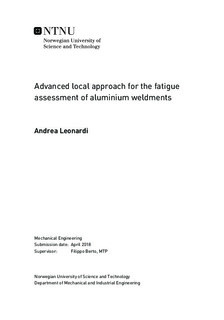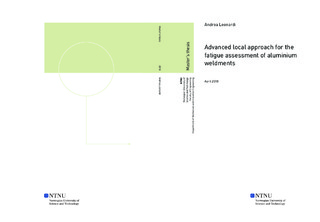| dc.description.abstract | The first step in fatigue design of welded joint is particularly complex e difficult. Welded bead geometries can not be precisely definied. Parameters such as bead shape and toe radius change from joint to joint, even if in a well-controled manufacturing operations. Moreover, residual stress arising from welding process increase the overall uncertainty. Therefore, no exact weld radius will be modelled during the first design process step, and weldments are modelled as V-sharp notch in several cases for reason of simplicity. In the current case (zero radius of welded toe) the intensity of asymptotic stress distributions follows Williams model, and they are quantified with the Notch Stress Intensity Factors (NSIFs). The main problem using NSIF in life fatigue assessment is related to its dimensions, changing for different opening angle. In this way, a grat number of reference data has to be available, each one for a respective geometry. Because of this, Lazzarin et all proposed another parameter, the Strain Energy Density (SED). This parameter is evaluated in a finite volume of control whose radius depends from material proprieties. By using SED method, several test lab evaluations of different welded joints were made in order to evaluate their fatigue life, mostly for cruciform and T-joint weldment geometries. In this work, for the first time, SED method is applied to butt joint of aluminium. In a first place, analysis of advantages arising from SED method are been analyzed and compared to NSIFs mehod. Following, experimental fatigue analysis has been made using butt welded. Moreover, numerical models have been made. Experimental data (number of cycles of failure) are been connected with numerical ones (SED values). Finally, a comparation between cycles assessed with SED method Nominal approach has been made. Firstly, a 2D FEM model for butt joints of 5 and 20 mm of thickness has been built. Following, a 3D model has been created in order to compare it with 2D. From 3D FEM model, particular effect arising from notch singularity have been noted and studied.
Keywords: Aluminium, Welded joints, Local approaches, Strain Energy Density, Coarse mesh | |

